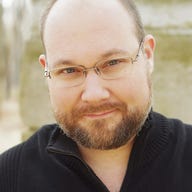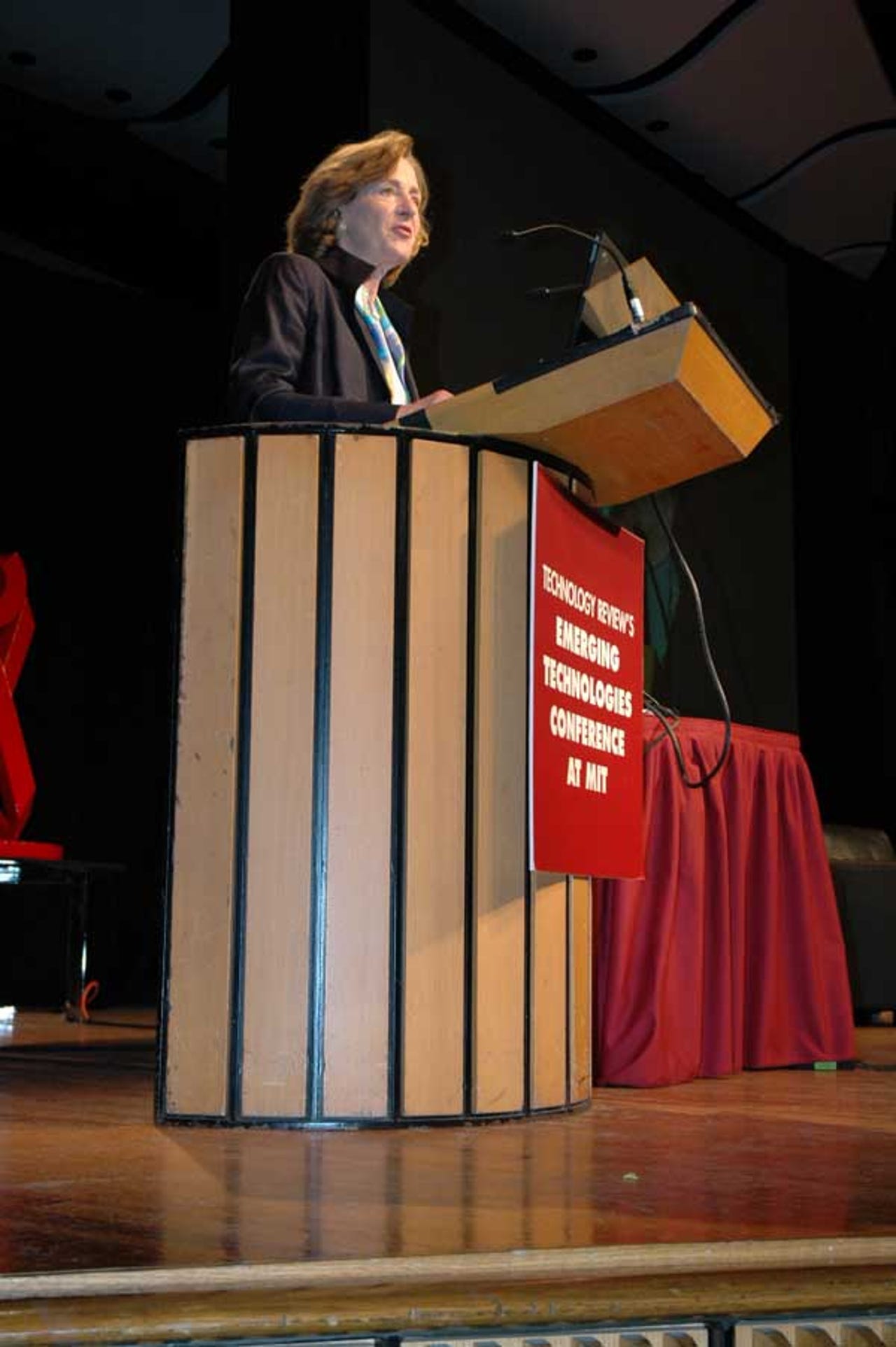Photo Gallery: Emerging Technologies at MIT, Day Two


MIT president Susan Hockfield kicks things off on Day 2 of MIT's September 2005 Emerging Technologies Conference.
Bogie Boscha is president and CEO of VisViva, a company that's using nanotechnology to provide golfers with detailed analytics regarding their swings. Not only can the technology be used to facilitate swing improvement, but also virtual game play and custom golf club manufacturing.
A screen shot of VisVisa's software, taken off of a Bluetooth-enabled HP PocketPC. The screen is displaying detailed data about the forward and back strokes of the swing of a putter. VisVisa is demonstrating the nanotechnology-based hardware/software combination here at MIT's September 2005 Emerging Technologies Conference.
Motorola CEO Ed Zander gave the morning keynote on day 2 at MIT's September 2005 Emerging Technologies conference. In the briefcase are a number of handsets that he demonstrated on stage, some of which are available only in Europe. Last week, ZDNet editor-in-chief Dan Farber interviewed Zander and took a photograph of all the devices that he keeps in that briefcase [see Motorola's Ed Zander Unplugged. According to Zander, the three great disruptors to the status quo are that (1) everything is being digitized, (2) broadband is moving to the air, and (3) intelligence is everywhere. That third point refers to the fact that everything -- our thermostats, our clothes, etc. -- will be spewing data onto the Internet.
Sun co-founder (and currently venture capitalist) Bill Joy giving the second keynote of day 2 at MIT's September 2005 Emerging Technologies Conference. Joy talks about the "six Webs" that form the organizing principle for how the Internet is going to change. They are the here, near, far, weird, B2B, and D2D (device to device) Webs. The six styles are nothing new to Joy. Although the name of the last two has changed, he's been talking about them for over five years.
Cisco senior vice president and chief development officer Charles Giancarlo speaking during the New Growth Opportunities in Computing and Communications session at MIT's September 2005 Emerging Technologies Conference. Giancarlo talked about how today's switches are operating at the same speed as the computer's backplane. The next logical conclusion, of course: replace the computer's backplane with the switch, thereby making the computer's bus and the network's bus one in the same.
Spain's Secretary of Commerce, Industry and Tourism Pedro Mejia speaking at a lunch reception during MIT's September 2005 Emerging Technologies Conference. Spain has realized that it needs to step up to the plate in terms of making foreign investments if it's going to remain competitive on a global level. Mejia spoke about Spain's new initiatives to step up his country's investments in the United States. Based on GDP, Spain's total economy rates eighth in the world, is 1/11th the size of the United States' economy, and comes in at around 50 percent of the US Defense Department's total budget.
Justin Rattner, a senior fellow at Intel who is also the director of that company's Corporate Technology Group, speaking during the New Growth Opportunities in Computing and Communications session at MIT's September 2005 Emerging Technologies Conference.